Pancake Tortoise
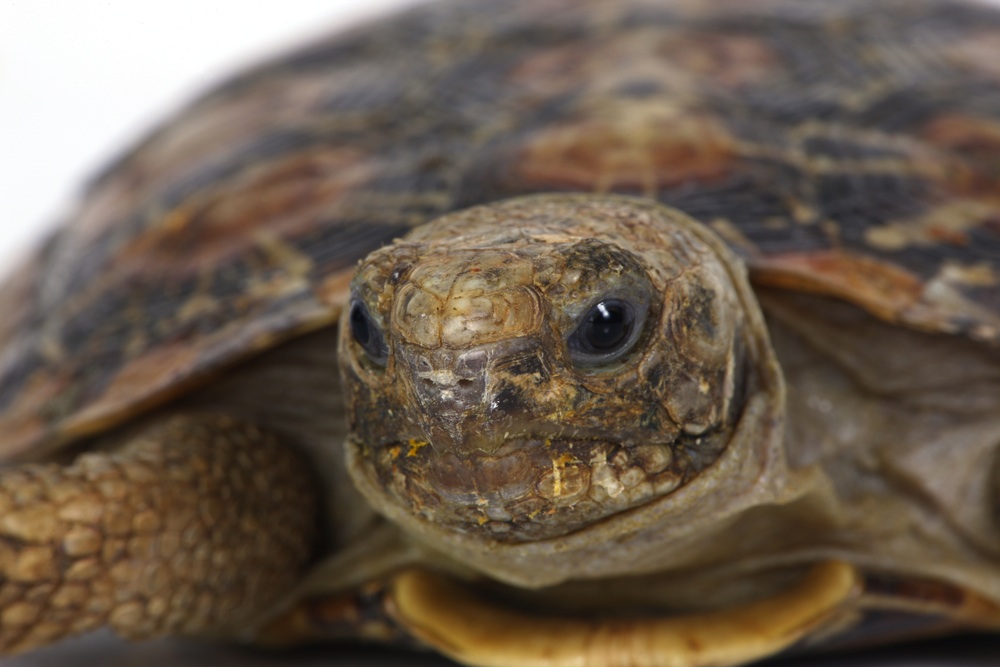
The origins of chelonians, comprising all tortoises, terrapins and turtles, extend back for at least 280 million years, according to the fossil record. But the ancestors of today’s tortoises only emerged on to land about 55 million years ago. Having hauled themselves permanently out of the water, so their new terrestrial life soon resulted in changes in their profile.
Although the first land tortoises had a relatively flat shell like that of their aquatic ancestors, their appearance altered quite significantly as well. Their shell became more domed, reflecting the increased effort needed to haul themselves around on land. A bigger shell allowed for a larger lung capacity, and also offered greater protection against predators, but this was achieved at a cost of mobility, and speed in particular.
A unique appearance
If the race between the tortoise and the hare was rerun, there is no doubt that a pancake tortoise would be the most suitable chelonian candidate to take part.The pancake tortoise (Malacochersus tornieri) operates on different set of rules however, which makes it truly unique. It is only found in rocky areas of habitat, notably around relatively small hillocks known as kopjes. These are scattered through areas of both scrubland and savanna, with the species’ range extending from southern Kenya to northern and eastern parts of Tanzania. There is a suggestion that pancake tortoises might also occur in part of Zimbabwe as well, but this has not been confirmed.
In order to thrive in their rocky environment, pancake tortoises have evolved a very different body shape from that of any other species. The most striking aspect of their appearance is their flattened body shape. A pancake tortoise’s shell may grow to 15cm (6in) or so in length, but its maximum height will be no more than 2.5cm (1in), creating a very flat profile.
Pick up one of these tortoises, and you will be surprised by how light they are - they lack the bony body casing beneath the shell which is characteristic of other species. They have sacrificed protection for mobility, being remarkable agile. If threatened, they will instinctively scamper to the nearest rock, sliding into any crack or crevice here and anchoring themselves in place with their front claws.
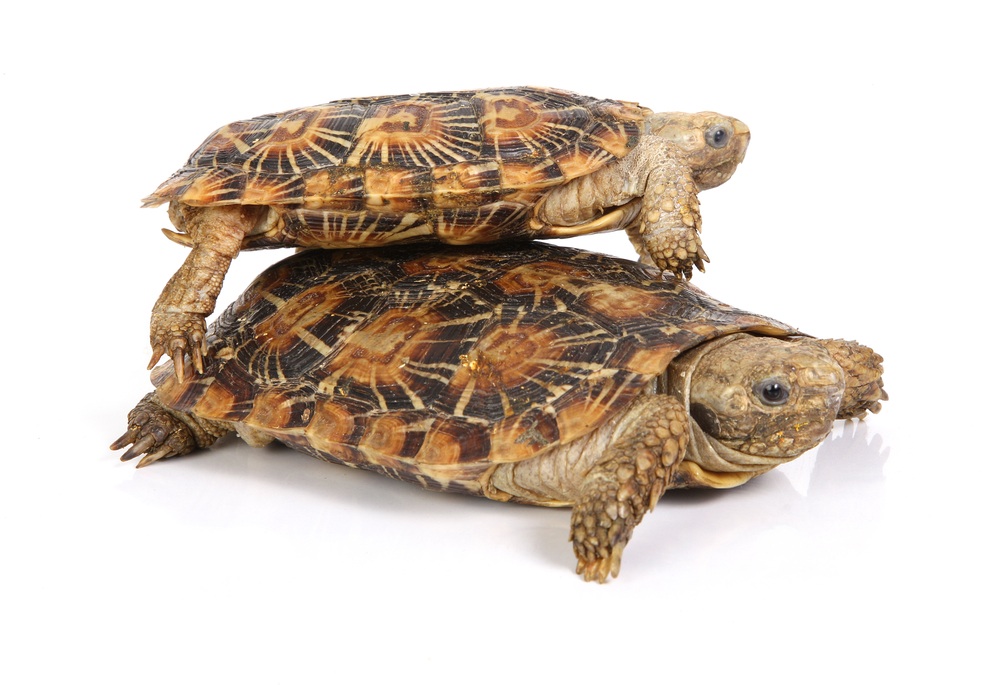
They climb readily too, and this is where another benefit of their lightened body becomes apparent. If a pancake tortoise accidentally rolls on to its back, then it will soon be able to right itself again, with relatively little effort.
Their agility helps to keep pancake tortoise relatively safe from predators such as mongooses (Herpestes inchneumon) which hunt them around their kopjes. But if caught out in the open, they are very vulnerable. The patterning on their shells may serve to provide them with some camouflage here however, allowing them to blend into the background.
Accommodation
Their unique anatomy and behaviour means that a set-up for these tortoises needs to be carefully planned. First and foremost, do not underestimate their determination to climb. If you are keeping them on a tortoise table, which in many respects is a much better housing option than a vivarium, be sure there is a bar around the top of the enclosure to prevent them from clambering up and then tumbling down over the top.
The temperature in their quarters should incorporate a localised hot spot of around 30°C (86°F) and a lower end day-time temperature of around 25°C (77°F), with a night-time drop to around 24°C (75°F). Yet although pancake tortoises originate from a relatively warm part of the world, the temperature at night in their homeland can occasionally plummet down to below 15°C (59°F). It is important to appreciate that their environment is generally dry however, which leaves them vulnerable to respiratory problems if they are exposed to damp surroundings, particularly if it is cold as well.
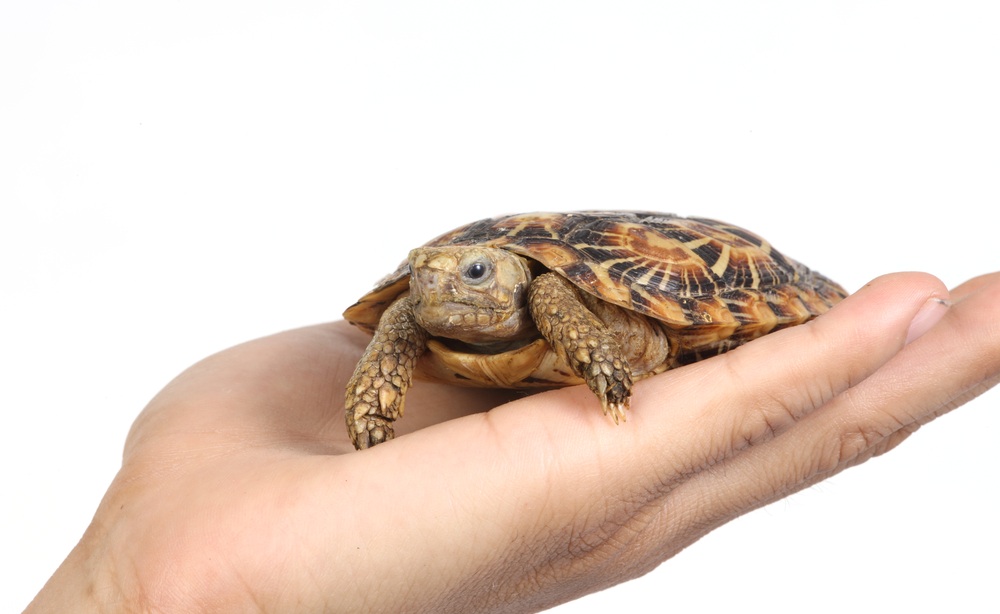
A choice of suitable retreats in their quarters is essential, but generally, the captive-bred stock which is available today is not especially nervous by nature. You can build suitable retreats quite pancake tortoise being heldeasily, using wood rather than rocks, and fit these into the tortoises’ accommodation. The most important thing is obviously to ensure that these retreats are secure, and will not topple over, causing the tortoise to be injured and/or end up becoming trapped.
Feeding
In the wild, pancake tortoises are reported to feed on a fairly meagre diet, reflecting the arid nature of their habitat, consisting of grasses and other vegetation as well as seeds and even nuts. A similar diet should be offering to those in captivity, bearing in mind that this is a grazing species. Various grasses such as timothy, combined with dandelions, clover and a variety of green vegetables, plus flowers such as rose petals (assuming the plants have not been sprayed) can all be offered, but do not give them any significant quantities of fruit.
These tortoises need to be provided with a suitable shallow container of drinking water as well. They will also benefit from a regular bath, perhaps once or twice a week, and can be allowed to wallow for some minutes in this tepid water. In terms of depth, it should only extend up to the height of the tortoise’s lower jawline, or just below.
Breeding
Pancake tortoises live in groups in the wild, around a particular kopje, and so need to be housed in small colonies, especially for breeding purposes. These should consist of a single male and several females. Keeping more than one male together is likely to be disruptive and will lead to fighting between the males, although this is rarely serious. They can be distinguished in fairly typical tortoise fashion by their tails, which are longer and also thicker in appearance. Male pancake tortoises tend to be slightly smaller in terms of their overall size as well.
The flattened body shape of the pancake tortoise is believed to be the reason that females cannot lay clutches of eggs like other species. Instead, they produce a elongated single egg, and occasionally two, every six weeks or so, effectively laying perhaps as many as half a dozen in succession. Indications of imminent egg-laying include the fact that females become significantly more active during the day, appearing very restless, and they will also try to climb more frequently within their quarters.
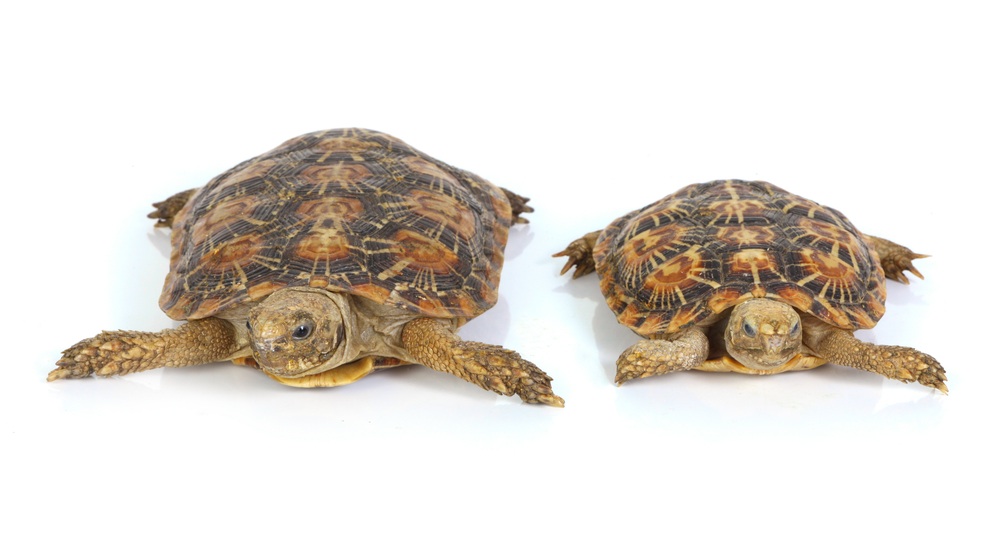
The incubation period can be surprisingly variable. At a temperature of approximately 31°C (88°F), it may range from three to seven months, and occasionally can extend up to nearly nine months. This reflects what is known about the natural breeding biology of these tortoises in the wild. Egg-laying in this species naturally tends to peak between autumn and winter, with the eggs remaining in the ground until the following spring, when they will then start to hatch.
Young pancake tortoises are little bigger than a medium-size coin when they hatch. Rearing them in groups usually helps to encourage healthy feeding behaviour. Their appearance is different from adults at this early stage, with their patterning being generally less diffuse while dark brown spots are often qpancake tortoise profileuite prominent over the upper part of the shell. These are likely to become less apparent with age. Adults on the other hand typically display a series of radiating dark lines running across the carapace.
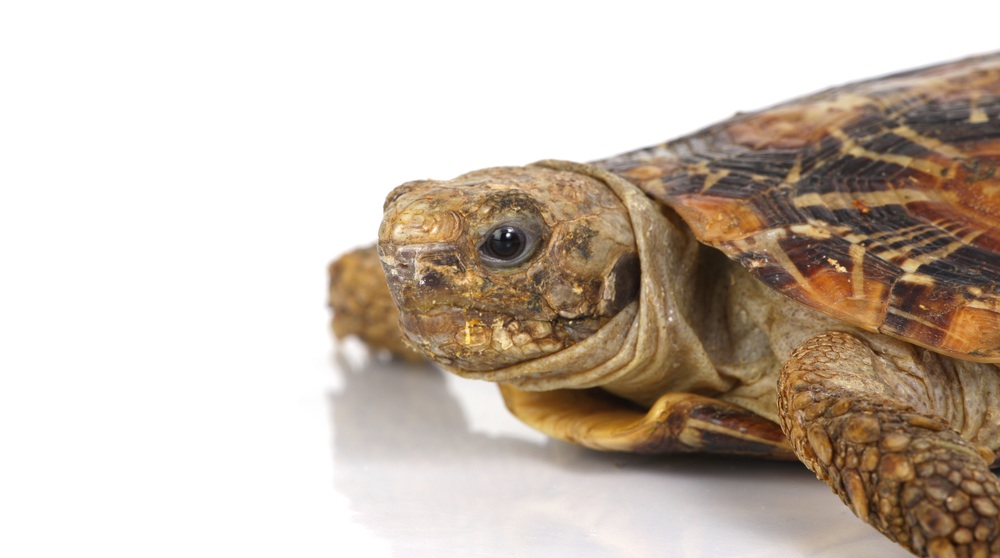
Although they cannot be described as prolific, pancake tortoises are now being bred much more frequently, and so their numbers in collections are growing. This in turn means that an increasing number of people should have the opportunity to study these fascinating reptiles at close quarters in the future.